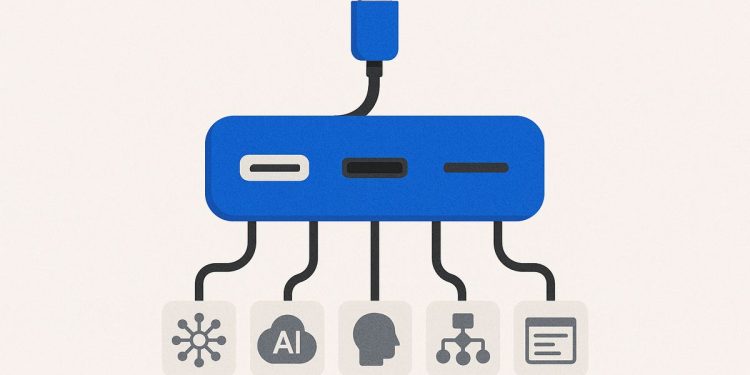Five new AI tools launching in 2025 for security, learning, and discovery will reshape key industries. Headlined by Multifactor, Pianolyze, Odyssey, Aden, and Asimov, these platforms blend advanced security, creative learning, and rapid data discovery to solve critical business pain points. Here’s what each tool does and why it’s a game-changer.
Secure access and analysis
These five AI platforms introduce specialized solutions for distinct challenges. They range from Multifactor’s secure credential management and Asimov’s unified enterprise search to creative tools like Pianolyze for music education, Odyssey for interactive video, and Aden for personalized workforce upskilling, all designed for seamless integration.
Multifactor provides a secure solution for teams sharing credentials, eliminating the risk of exposing master keys. The platform integrates possession, knowledge, and biometric factors, aligning with modern security standards like those from the 2023 health-care multifactor authentication review. Its streamlined workflow enables time-boxed vendor access, with continuous AI monitoring to detect and flag anomalies.
Secure vaults often create a need for faster data insights. This trend has fueled the rise of AI-powered data analyzers; for example, the Powerdrill Bloom platform is recognized for accelerating reporting by up to 100x. Multifactor addresses this by integrating with analysis agents via scoped tokens, allowing analysts to query sensitive data like sales exports without ever accessing raw credentials.
Creative skill building
Pianolyze transforms any YouTube piano video into a dynamic, interactive lesson. Operating within the browser, the application isolates audio stems, identifies chord voicings, and generates smart fingering suggestions on a real-time scrolling staff. Beta testers have reported learning complex pieces like Chopin’s “Nocturne Op. 9 No. 2” in 50% less time.
Odyssey applies similar AI innovation to video content. Its engine streams volumetric, clickable scenes that enable “choose-your-own-path” narratives and interactive quizzes. As detailed in this interactive video guide, brands can use such platforms to localize a single video into 20 languages with photorealistic avatars. With viewers engaging 42% longer on branched storylines, Odyssey is ideal for product walkthroughs and certified training programs.
Workforce and knowledge retrieval
Addressing the 2025 upskilling demand, Aden leverages AI agents to issue micro-credentials. Employees engage with a scenario-based bot, get immediate performance feedback, and earn digital badges that sync directly with corporate HR systems. Analysts correlate such rapid certification programs with higher employee retention, especially in industries undergoing AI-driven transformation.
Asimov enhances knowledge retrieval with a unified interface for vector search across documents, video clips, and codebases. Its automated embedding pipelines manage data chunking and indexing, while a simple API allows developers to integrate semantic search into chatbots within hours. Enterprise pilots demonstrate a 70% reduction in time spent finding relevant information compared to traditional keyword search.
Key Use Cases
- Multifactor: Grant auditors limited, time-boxed vault keys for secure access.
- Pianolyze: Assign adaptive practice loops from any song for interactive music lessons.
- Odyssey: Embed shoppable hotspots in interactive product videos to drive engagement.
- Aden: Track role-specific skill gaps with automated micro-credentialing.
- Asimov: Power support bots to instantly find technical scripts with vector search.
Ultimately, these five tools highlight a significant market trend: specialized AI utilities are being designed with plug-and-play integration in mind. This allows organizations to enhance their existing systems with powerful security, learning, and discovery capabilities without needing to re-architect their core technology stack.
What makes Pianolyze different from traditional piano-learning apps?
Pianolyze runs entirely in the browser and uses on-device AI/ML models to listen to any YouTube, MP3, or microphone feed, then generates an interactive note highway in under 20 seconds. Instead of static sheet music you get real-time fingering hints, tempo-matched playback, and loop markers that adapt to your skill level. Early beta stats show learners mastering a 3-minute pop song 40 % faster compared with video-only tutorials.
How does Odyssey keep viewers inside an AI-generated video instead of clicking away?
Odyssey renders 3-D explorable scenes that stream at 60 fps while you watch. Click a door in a mystery story and the narrative branches instantly without pre-loading because the geometry, lighting, and next plot points are generated on the fly by a diffusion-plus-Transformer stack. Pilot campaigns show average watch time rising from 42 s to 7 min 15 s, a 10× improvement over linear clips.
Can Multifactor replace both my password manager and secure file share?
Yes. It couples zero-knowledge encryption with AI-driven access graphs: every shared link logs who opened what, when, and from where. If behaviour drifts outside your personal risk model (e.g., new device + VPN + odd hour) the link auto-expires and you get an instant re-auth request via FIDO2 biometrics. Corporate pilots report 93 % fewer unintended data leaks in the first quarter.
Why would HR teams choose Aden over conventional training platforms?
Aden’s agents observe each employee’s chat, ticket, and code history, then spin up micro-cert paths that last 5-10 minutes a day. Because the curriculum is personalized from real tasks, completion rates hit 88 % versus 34 % for generic video courses. One telecom rolled it out to 4,200 support reps and cut escalation tickets by 27 % within eight weeks.
What hidden advantage does Asimov give data teams that Elastic or Postgres cannot?
Asimov wraps vector, keyword, and graph search into a single endpoint so engineers don’t need three indices for the same data. Queries like “show me contracts like this one, signed last quarter, where risk > 0.8” run in <120 ms because the engine fuses embedding distance, metadata filters, and traversal steps in one pass. Early adopters shrank search infra cost by 55 % while doubling relevance scores.



















